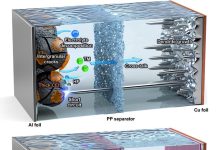
A team of scientists at the University of Queensland (UQ) has achieved a major milestone in solar energy by setting a world record for the efficiency of a new type of solar panel.
Led by Professor Lianzhou Wang, the team created a solar cell made from tin halide perovskite (THP) that can convert sunlight into electricity at a certified rate of 16.65%.
This result, published in Nature Nanotechnology, is the highest ever recorded for this type of solar cell.
Although the improvement might sound small—just under one percent higher than the previous record—Professor Wang says it’s a huge step forward.
In the field of solar technology, progress is often slow and careful, so even small gains can make a big difference.
The new THP solar cells are nearly as efficient as many silicon-based solar panels that are already on the market.
But they have a big advantage: they could be cheaper, quicker, and more sustainable to make. Unlike most perovskite solar cells, which use toxic lead, these new cells use tin—a safer and more eco-friendly option.
Back in 2020, Professor Wang’s team also broke records using quantum dot solar cells. According to team member Dr. Dongxu He, the techniques and materials they developed back then helped inspire this new success with THP technology.
Until now, one of the biggest problems with using tin in solar cells was that it formed poor-quality films, which reduced efficiency. But Dr. Peng Chen explained that the team found a solution by adding cesium ions to improve the structure of the film and reduce defects. This key improvement allowed them to reach record-breaking efficiency without compromising environmental safety.
The researchers believe that this is just the beginning. With further work, THP solar cells could become an ideal choice for home use, both outdoors and indoors. They’re not only effective but also safer for people and the planet.
Beyond solar panels, this breakthrough could also benefit other technologies like lasers, sensors, and electronic devices. Professor Wang even mentioned the exciting possibility of using lightweight THP solar cells to power electric aircraft.
He hopes other scientists will try to beat this new record, as it will only drive more innovation in clean, affordable energy. As he put it, “The sky really is the limit.”



